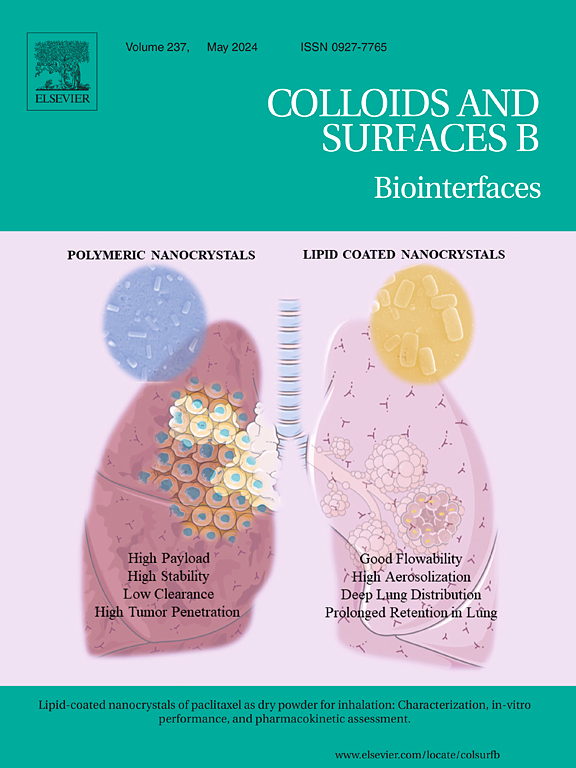Hydrogels of diet-derived electron donors restore epithelial hypoxia and reduce iNOS synthesis to inhibit inflammation-induced overgrowth of facultatively anaerobic bacteria for gut homeostasis
IF 5.4
2区 医学
Q1 BIOPHYSICS
引用次数: 0
Abstract
Food hydrogels targeting respiration of microorganisms via changing the micro-ecological environment in gut were prepared through the self-assembly of polyphenols extracted from tea leaves harvested in summer and autumn and the protein fibrils originating from egg white lysozyme. Oral administration with the hydrogels effectively inhibited the over-expansion of the facultative anaerobic bacterium indicated by E. coli Nissle 1917 (EcN) and alleviated the clinic symptoms of chronic intestinal inflammation in mice. Importantly, the hypoxia of epithelial cells was elevated significantly and the overexpression of the inducible NO synthase (INOs)-related NOS2 gene was inhibited substantially in colons of the colitis mice, which accounted for prevention of the abnormal expansion of E. coli via blocking respiration. The treatment with the hydrogels preserved normal mitochondrial function in colonic epithelial cells under oxidative stress, which could serve as the mechanism to maintain the capability to consume oxygen.
求助全文
约1分钟内获得全文
求助全文
来源期刊

Colloids and Surfaces B: Biointerfaces
生物-材料科学:生物材料
CiteScore
11.10
自引率
3.40%
发文量
730
审稿时长
42 days
期刊介绍:
Colloids and Surfaces B: Biointerfaces is an international journal devoted to fundamental and applied research on colloid and interfacial phenomena in relation to systems of biological origin, having particular relevance to the medical, pharmaceutical, biotechnological, food and cosmetic fields.
Submissions that: (1) deal solely with biological phenomena and do not describe the physico-chemical or colloid-chemical background and/or mechanism of the phenomena, and (2) deal solely with colloid/interfacial phenomena and do not have appropriate biological content or relevance, are outside the scope of the journal and will not be considered for publication.
The journal publishes regular research papers, reviews, short communications and invited perspective articles, called BioInterface Perspectives. The BioInterface Perspective provide researchers the opportunity to review their own work, as well as provide insight into the work of others that inspired and influenced the author. Regular articles should have a maximum total length of 6,000 words. In addition, a (combined) maximum of 8 normal-sized figures and/or tables is allowed (so for instance 3 tables and 5 figures). For multiple-panel figures each set of two panels equates to one figure. Short communications should not exceed half of the above. It is required to give on the article cover page a short statistical summary of the article listing the total number of words and tables/figures.
 求助内容:
求助内容: 应助结果提醒方式:
应助结果提醒方式:


